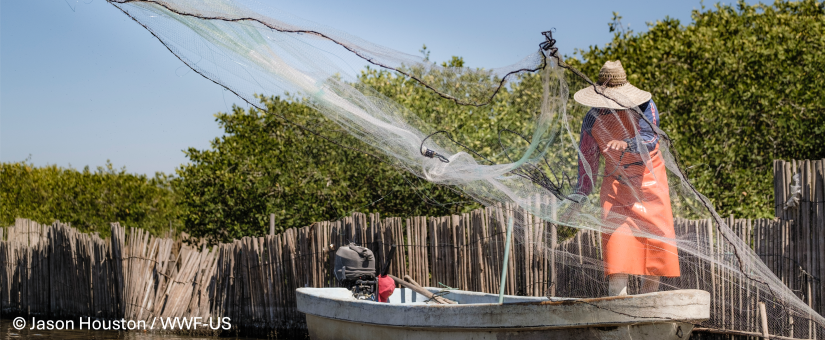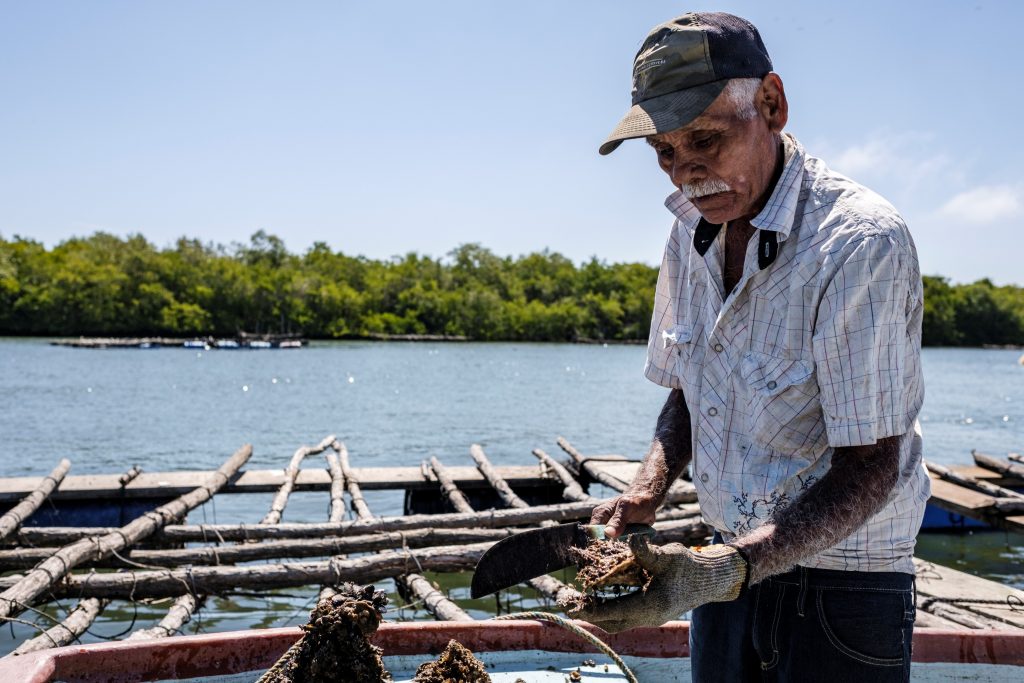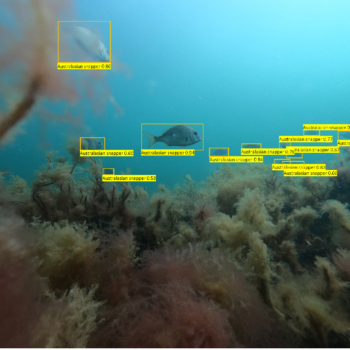
New Paper: Integrating socioeconomic and ecological data into restoration practice
- Posted by Jasmine Hall
- On December 4, 2024
A Blueprint for Successful Restoration Implementation: A Case Study in Mexico’s Mangroves
By Alex White
This year, the IUCN released a report on global mangrove ecosystems, the first for the Red List of Threatened Ecosystems. It quotes that “over half of the world’s mangrove ecosystems are at risk of collapse before 2050.” Fortunately, international interest in mangroves is steadily growing with increased funding opportunities, particularly from the Mangrove Breakthrough – a funding initiative run by The Mangrove Alliance that aims to increase protected areas and establish restoration pledges. With heightened international focus and increased funding, now is the time for conservation and restoration efforts to take full advantage of this momentum. However, despite funding and resources, many mangrove restoration initiatives fail due to poor site selection.
Selecting mangrove restoration sites based solely on socio-economic or ecological factors leads to significantly lower chances of success than using a more integrated approach. This paper, led by Jaramar Villarreal-Rosas, published in Conservation Biology, provides a pragmatic and transferable blueprint for restoration through prioritising socio-economic and ecological factors. By utilising decision analysis, this innovative methodology integrates socioeconomic and ecological data to pinpoint sites with the highest probability of restoration success, providing an invaluable rethink of traditional restoration practices. Sites chosen solely for socio-economic reasons could capture just 16% of the potential value of functioning mangroves, whereas those selected using a combination of socio-economic and ecological criteria captured 46%.
What truly sets this research apart is that the systematic decision-making process was conceived and executed in stringent timelines, a testament to the efficacy of interdisciplinary collaboration and rapid delivery. Made feasible by nongovernmental organisations, local government entities, and scholars, this approach offers mangrove restoration initiatives everywhere a methodology to redefine restoration strategy. As global restoration efforts gain momentum, this approach stands poised to guide site selection, offering hope for remaining habitats across the globe.

Local community member shrimp fishing in Biosphere Reserve Marisnas Nacionales, Nayarit. © Jason Houston / WWF-US
At the heart of this particular study, lies the Biosphere Reserve Marismas Nacionales, Nayarit in Mexico – a focal point for restoration efforts bolstered by recent funding. Villarreal-Rosas’ team identified 468 potential restoration sites, evaluating restorability potential based on socioeconomic and ecological metrics. The team then ranked sites for restoration implementation with spatial optimisation, maximising both resource utilisation and likelihood of restoration success.
The approach considered factors such as:
- Ability of mangrove propagules to establish
- Ability to endure sea-level rise
- Provisioning of essential ecosystem services
- Local community dynamics
This innovative approach prioritises areas that align both ecologically and socio-economically, moving beyond often-used methods that consider only one or the other.

Elder with knife: Organic oyster farming, Biosphere Reserve Marismas Nacionales, Nayarit. © Jason Houston /WWF-US
The successful implementation of Villarreal-Rosas’ research in a real world setting demonstrates a refreshing approach to academic research that has been notoriously lacking. The approach was developed with limited timelines in mind a widely acknowledged challenge for conservation research. Secondly, it actively invites the people in which restoration is proposed to occur into the methodology, development and implementation of conservation- a well recognised component for restoration success. Thirdly, it combines not only satellite mapping with community and stakeholder knowledge, but integrates critically important ecological variables in a decision analysis framework to maximise the likelihood of restoration success.
As we face escalating environmental degradation, Villarreal-Rosas’ integrated methodology provides a compelling, actionable model for future restoration. It blends scientific insight with community engagement to ensure that restoration efforts are not just well-funded but well-executed, offering an optimised path forward for ecosystem restoration worldwide.




0 Comments